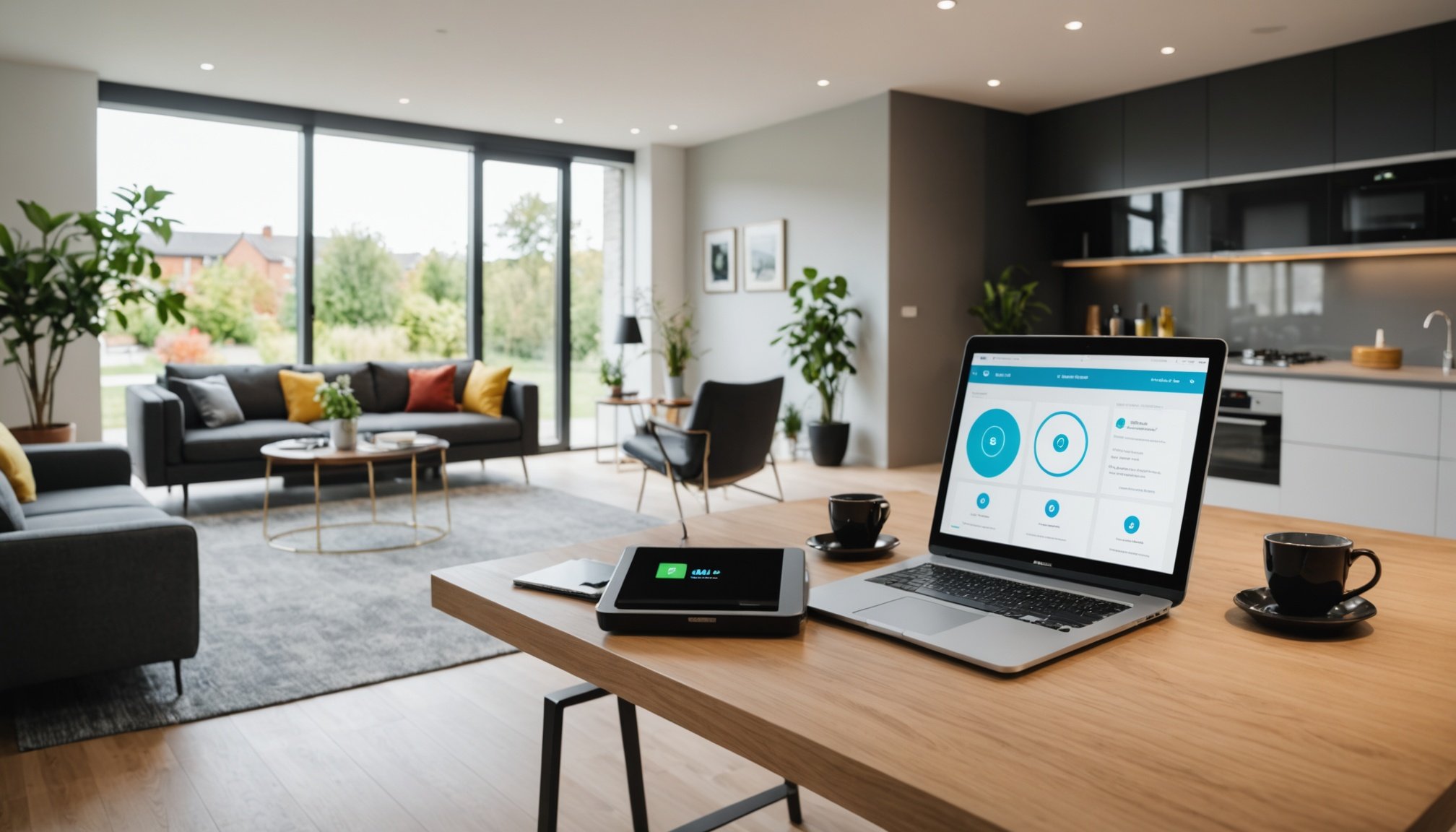Understanding Smart Home Vulnerabilities
As our homes become increasingly connected, understanding smart home security threats is crucial. Vulnerabilities in smart devices often originate from weak security settings. For instance, devices with default passwords or without regular updates may easily be compromised. Homeowners must consider potential cybersecurity risks, including privacy intrusions and data theft.
An example of such a breach is when a UK household’s security camera was hacked, allowing unauthorized access to live feeds. This incident highlights the direct impact of inadequate cybersecurity measures. Moreover, smart home breaches like this can jeopardize a homeowner’s privacy and safety.
Also to discover : Navigating the legal landscape: key steps for uk homebuyers purchasing properties with tenants in place
Weak Wi-Fi networks pose another significant risk, as they can be exploited to access all connected devices. Furthermore, the convenience of linking smart devices multiplies the points of entry for potential attacks. Therefore, knowing the common pitfalls allows users to enhance their security posture.
Implementing basic cybersecurity practices – like changing default passwords and ensuring devices have the latest firmware – can significantly mitigate these vulnerabilities. Remaining alert to these issues and taking proactive steps is invaluable in protecting one’s home environment. By staying informed, homeowners can enjoy the benefits of smart technology without compromising their security.
Additional reading : How Can Homebuyers Navigate the Complexities of Mortgages?
Implementing Firewalls and Additional Security Layers
Smart homes need robust firewall protections to safeguard their networks effectively. A firewall acts as a barrier, managing and filtering incoming and outgoing traffic based on an organisation’s previously defined security policies. By doing this, it prevents potential intrusions and ensures that only authorised connections are maintained.
Additional Security Tools
In addition to firewalls, employing other network security tools provides an extra layer of protection. Virtual Private Networks (VPNs) encrypt data over the internet, securing it from prying eyes and keeping smart home activities private. Furthermore, intrusion detection systems (IDS) can monitor network traffic for suspicious activities and alert homeowners—or halt the activity altogether—when an anomaly occurs.
Configuring Security Layers
For optimal protection, homeowners should employ a multi-layer approach to home cybersecurity enhancements. Begin by integrating a reputable firewall as the first line of defence. Make use of a VPN service to secure online communications and consider IDS setups for real-time network monitoring. Configuring these layers not only strengthens the security posture but also improves resilience against potential threats, enabling more robust protection against unauthorised access.
Essential Cybersecurity Practices for Smart Homes
Ensuring the security of smart homes is paramount, especially when faced with common smart home security threats. By incorporating effective cybersecurity measures, homeowners can protect their privacy and personal data.
Setting Strong Passwords
One of the most fundamental cybersecurity measures for smart homes is setting strong passwords. A password should be both complex and unique. Avoid using easily guessed words or sequences. Instead, combine uppercase and lowercase letters, numbers, and special characters to enhance strength. This practice significantly reduces the likelihood of compromising smart devices.
Regularly Updating Firmware
Smart devices require regular firmware updates to keep them secure. Many vulnerabilities in smart devices stem from outdated software. Homeowners must routinely check for updates and apply them promptly. Firmware updates often contain critical security patches that address newly discovered threats, thus playing an essential role in securing smart devices.
Utilizing Secure Wi-Fi Networks
Securing your home’s Wi-Fi network is vital. Start by changing the default network name and password. Enable encryption through WPA3, if available, for robust protection. Additionally, hiding your network’s SSID and enabling a network firewall adds further layers of defense. Implementing these steps fosters a secure environment, mitigating potential cybersecurity risks for homeowners.
Resources for Further Learning and Professional Help
Ensuring the security of smart homes involves not just immediate actions but also ongoing education. Homeowners can benefit greatly from various educational resources for cybersecurity available online.
Online Resources and Courses
Numerous platforms offer free and paid courses focusing on smart home security. These courses cover topics such as network security, vulnerabilities in smart devices, and protection against cybersecurity risks for homeowners. Websites like Coursera and Udemy feature comprehensive courses that demystify complex security concepts with real-world scenarios.
Consulting Cybersecurity Professionals
For those requiring personalised advice, consulting with cybersecurity professionals can provide tailored solutions. Experts can perform risk assessments, recommend best practices, and assist in implementing security measures specific to each home’s setup.
Podcasts, Books, and Blogs
For continuous learning, engaging with cybersecurity content through podcasts, books, and blogs is invaluable. Publications like “Wired” and podcasts such as “Darknet Diaries” offer insights into both the latest threats and cybersecurity measures for smart homes.
By embracing these learning avenues, homeowners can stay informed about emerging threats and strategies to protect their digital spaces effectively.
Awareness of UK Regulations and Guidelines
Understanding the UK cybersecurity regulations is paramount for smart homeowners aiming to protect their personal data. Compliance with these rules is not just a legal requirement but a critical step in maintaining effective security practices.
UK cybersecurity laws like the General Data Protection Regulation (GDPR) mandate stringent data protection measures. Ensuring that smart home devices adhere to these standards helps safeguard user privacy. Homeowners need to be aware of smart home compliance to avoid penalties and protect sensitive information.
To stay compliant, devices must incorporate secure, up-to-date software and cybersecurity measures for smart homes. Homeowners should prioritise network security tools like firewalls and intrusion detection systems, ensuring they align with legal safeguards.
To aid in this, resources such as the UK government’s official guidelines and online platforms provide accessible information on legal requirements specific to smart homes. Engaging with these materials ensures informed decisions, enhancing compliance with UK laws in everyday device management.
By staying informed about legal obligations, homeowners not only fortify their security measures but also contribute to the broader cybersecurity landscape, reflecting responsible usage and management of their smart home ecosystems.

